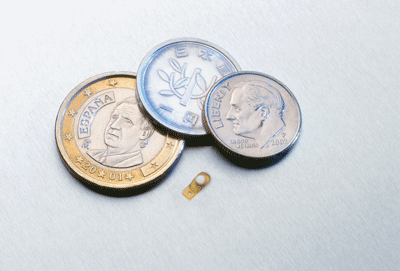An intravitreal implant used to treat posterior uveitis also shows promise as a treatment for diabetic macular edema, according to preliminary results.
In clinical studies, Bausch & Lomb randomized 197 hospital patients to receive standard of care (repeat laser or observation) or Retisert (fluocinolone acetonide intravitreal implant, pSivida Limited/Bausch & Lomb), which releases a constant amount of fluocinolone, a corticosteroid, into the eye. (B&L is the exclusive licensee of pSivida and co-promotes Retisert, which currently is FDA approved for the treatment of posterior uveitis, with Novartis Ophthalmics.)
Preliminary follow-up data, to be presented at next months Association for Research in Vision and Ophthalmology meeting, found that at 36 months after implantation, 58% of the implanted eyes showed no evidence of edema vs. 30% of eyes that received standard-of-care treatment. Also, 28% of the implant patients demonstrated a three or more line improvement in visual acuity vs. 15% of patients who received the standard of care.
 |
| The Retisert implant, shown here for size, is FDA approved for uveitis but also shows effectiveness in treating DME. |
Meanwhile, an independent Data Safety Monitoring Board (DSMB) has recommended continuation of phase III clinical studies of Medidur (pSivida/Alimera Sciences), a tiny injectable device that also provides a sustained release of fluocinolone acetonide, for the treatment of diabetic macular edema. A DSMB independently evaluates study data to identify potential safety issues that might warrant modification or early termination of ongoing studies. Unlike Retisert, which is surgically implanted, Medidur is injected during an office visit.
Pearson P, Levy B, Comstock T, Fluocinolone Acetonide Implant Study Group. Fluocinolone acetonide intravitreal implant to treat diabetic macular edema: 3-year results of a multi-center clinical trial. ARVO Abstract #5442, 2006.

